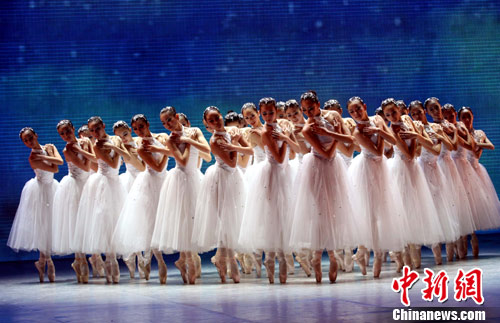(Ecns.cn)--Having origins in Italy during the Renaissance of the 15th century, and flourishing in France and Russia in the early 1600s, ballet has been warmly welcomed all over the world because of its unique features and techniques, as well as the romantic tutu worn by dancers.
Although ballet is an imported dance style, the history of ballet in China is not short. It was first displayed in the royal palace during the Qing Dynasty (1644 to 1911), and later in the 1920s, Russian ballet dancers came to Shanghai to teach and train professional dancers.
For nearly a hundred years, ballet has appeared in front of Chinese audiences nonstop. Even during the restrained period of the Cultural Revolution (1966 to 1976), some ballets with Chinese characteristics were created by Chinese dancers.
Always welcome
From the 1920s to 1930s, ballet was brought to China by the Russians, especially to big cities like Shanghai, Harbin, and Tianjin. Special schools were opened by Russian experts and small-scale performances were recommended by Europeans and Americans.
Although only a small group of people had access to this Western art form during those days, these ballet schools and performances played a key role in introducing the art to the Chinese people.
After the foundation of the People's Republic of China in 1949, ballet ushered in a golden time of development. Professional ballet troupes continue to bloom as the country progresses.
In 1954, the development of ballet became systematic with the foundation of the Beijing Dance School, which is today's Beijing Dance Academy. In 1959, the Experimental Ballet of the Beijing Dance School, the progenitor of today's National Ballet of China, was founded, producing the first members of China's professional ballet troupe.
During the Cultural Revolution, though often viewed as a disastrous period for the country's cultural and artistic creation, ballet had special opportunities to develop.
Chinese ballet artists created new works with themes related to the Chinese revolution, such as "The Red Detachment of Women" and "The White-Haired Girl." These became a milestone in the creation of original Chinese ballets.
These two works stunned the world with their unique Chinese characteristics and helped to greatly popularize this Western art form in China. At that time, many non-ballet song and dance troupes also rehearsed the two works, and even ordinary young dance lovers imitated the moves.
In the 1990s, more ballet troupes were established in China, including in Shenyang, Chengdu, and Guangzhou. Accompanying these ballet troupes, many ballet training schools for children also opened.
Parents who had a ballet dream sent their children to these schools. Learning ballet became a hobby for young people and choosing ballet as a career was a common option for dance lovers.
Coming into the 21st century, Chinese ballet has entered a flourishing new phase, featuring greater diversity. All kinds of genres have appeared, such as dramatic, modern, and contemporary, as well as ballets assimilating Chinese cultural elements.
Chinese ballet dancers not only successfully perform world classical works, but also new creations by internationally famous contemporary ballet choreographers. In 2006, the Royal Danish Ballet invited Wang Yuanyuan, director of the Beijing Contemporary Dance Theater, to choreograph "The Color of Love," the first time the company had commissioned work from a Chinese choreographer.
Developing for years in China, ballet has been localized in some aspects in China. Chinese dancers adapted the famous Kunqu Opera "The Peony Pavilion" into a ballet work and have performed it in many countries.
But facing a cultural restructuring, this type of imported art form still meets challenges and needs to figure out a way to better develop.


















